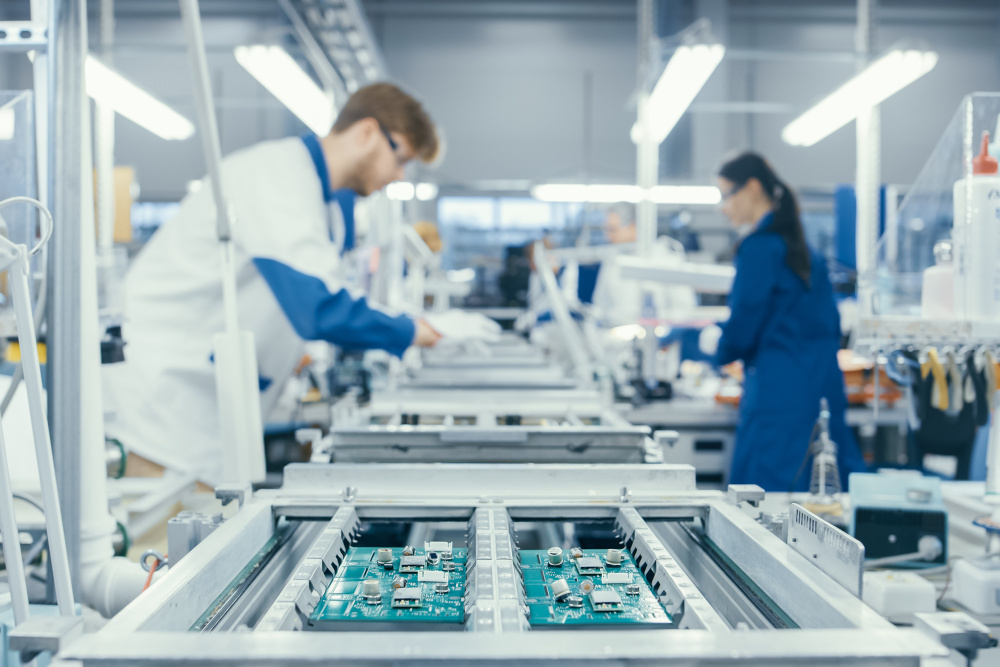MacroFab Blog
The Lunar New Year will begin on February 1st, 2022, catalyzing the most significant annual mass migration of people on the planet.
The Lunar New Year will begin on February 1st, 2022, catalyzing the most significant annual mass migration of people on the planet. Millions of workers in urban areas will travel to be with their families for the celebration, leaving thousands of offices and factories closed for weeks.
Workplaces typically shut down ten days before the Lunar New Year and reopen at different times. Though the legal holiday will last through February 6th, most people in China will celebrate until the 15th. And because China has become the epicenter of so much global production and activity, the multi-week pause will affect global supply chains and companies everywhere, as it does every year.
The Lunar New Year also tends to bring about staffing changes and labor shortages, as many workers change jobs during the holiday or never return to their previous employers at all. Consequently, factories can lose meaningful production capacity in a matter of weeks. Knowing this, companies try to accelerate production and get shipments out of China before the holidays begin.
Piling on more complexity to the 2022 Lunar New Year is, of course, continued disruption from the COVID-19 pandemic. Supply chains are still reeling from what has been a tremendously difficult season of volatility and uncertainty, causing companies worldwide to rethink how they source, produce and deliver products to customers.
Fortunately, there are steps the supply chain, and production managers can take to mitigate some of the downsides of the Lunar New Year. The key is to understand how production is impacted and plan far in advance for unforeseen issues.
Work With an Experienced Manufacturer

PCB Assembly Worker
Outside of APAC countries, it’s hard to comprehend how significant the Lunar New Year is. There is no comparable event elsewhere in which a country with so much influence over the global economy comes to a complete stop for weeks.
Nothing leaves China during the Lunar New Year. People don’t work. Products don’t get assembled. Depending on exactly when factories close and reopen, production could pause for up to three weeks and take even longer to ramp back up to full capacity. That’s why it’s critical to work with a manufacturer that has been through many Lunar New Year cycles.
Experience bubbles to the top during the Lunar New Year season. Factories that have been around for longer understand how to navigate the chaos and mitigate labor shortages. They’ve also established processes to fulfill orders in the busy lead-up to the holiday and know how to get back up to speed after it’s over. Additionally, experienced manufacturers can help companies develop contingency plans for the multi-week pause, if necessary.
One of the best ways to minimize Lunar New Year disruption is to work with factories in other parts of the world like the US, Mexico, and Canada and build a strong rapport with that partner over time. Newer customers tend to get left behind in the mad rush before everything shuts down, as factories focus on their most important accounts.
Furthermore, an experienced manufacturer knows how to communicate effectively to circumvent potential production and scheduling delays. They can point managers to facilities outside of China and help identify backup suppliers, particularly for products that depend on components sourced in China. They can also send products to another country for assembly ahead of time and ensure you know whom to contact when problems arise. A digital manufacturing platform can help you find a network of factories in North America.
Forecast Demand Before and After the Holiday

Forecasting specifically with the Lunar New Year in mind is essential. For most companies, this means forecasting demand before and after the holiday to understand how much inventory will be needed over a two or three-month stretch. Supply chain leaders can then place orders proactively to cover the Lunar New Year drought. It’s not uncommon for companies to stock up on sufficient inventory to cover demand for up to a month after the Lunar New Year ends.
It’s also a good idea to share forecasts with suppliers so they can prepare for increased production volumes before the holiday or plan to recruit heavily afterward for the post-holiday restart. The inventory you need to cover the Lunar New Year gap should leave China’s shores several weeks before the holiday begins, which doesn’t happen unless you work in step with your manufacturer.
Keep in mind that quoting times are slow during the Lunar New Year. It’s best to submit important quote requests early to avoid production delays once factories reopen. Also, don’t forget that December is a busy month for Chinese suppliers, so the earlier, the better when it comes to planning this time of year.
Make Logistics Decisions Early

Outside of actual production, supply chain managers also have to make logistics decisions much earlier than usual. You should book shipments far in advance, knowing that companies everywhere will be trying to get more products out of China in the weeks leading up to the Lunar New Year.
The demand explosion around this time of year naturally causes freight costs to balloon and container supply to dry up. So, plan to pay more for shipments around the Lunar New Year and recognize that there is some risk that containers won’t be available at all. Many companies will pay premiums to get their products out of China before the holiday, causing some orders to roll onto later shipments if supply chain managers aren’t willing to pay inflated prices.
Conventional wisdom for making logistics decisions states that products should be in port at least ten days before the start of the Lunar New Year, and shipments should be booked at least two weeks before. In addition, materials used in production after the holiday should arrive before the holiday to clear customs and make it to the appropriate facility.
Ramp Up Quality Management
Another consequence of the Lunar New Year is that production quality tends to fall, as factories work overtime to get more inventory out the door. Quality issues can delay shipments even more and create issues downstream with customers who receive defective products.
Before and after the holiday, companies should bolster quality management processes and work with manufacturers to improve onsite and outbound inspections around the Lunar New Year. While this may add to production costs, it’s well worth the investment.
Plan Early or Reduce Overseas Production

PCB Manufacturing
The primary takeaways for production and supply chain leaders are to plan early, work with experienced manufacturers in North America, and put processes in place to protect production throughout the entire Lunar New Year period. Keep an open line of communication with your Chinese suppliers and know whom you can reach out to with any questions or concerns. These are crucial practices for avoiding crucial Lunar New Year disruption.
However, there is an alternative and perhaps a better long-term solution. You can reduce your dependency on Chinese production altogether by working with MacroFab and its trusted network of North American manufacturers.
MacroFab is a digital platform that streamlines every aspect of electronics production, from prototyping to assembly. Our solution enables engineers to iterate on digital designs quickly, source primary and alternate components, evaluate numerous manufacturing partners and take advantage of the best facilities available at any given time.
By shifting production to MacroFab, companies can cut ties with overseas suppliers that are hard to work with for various reasons – time zone differences, cultural barriers, lack of transparency, design change inflexibility, etc. And when it comes to a situation like the Lunar New Year, MacroFab’s expert support team can help you shift volume quickly to other facilities to stay on top of delivery schedules.
FAQs about Lunar New Year PCBA Production
How does the Lunar New Year affect production?
The Lunar New Year, celebrated in China and other parts of Asia, causes a major disruption in global supply chains every year. Millions of workers travel home for the holiday, leading to factory closures for weeks. This can cause production delays, staffing shortages, and quality issues.
How can I minimize production disruption during Lunar New Year?
Here are some key steps:
- Plan early: Forecast demand before and after the holiday to ensure you have enough inventory. Place orders well in advance and book shipments early to avoid delays and inflated costs.
- Work with an experienced manufacturer: Experienced manufacturers can navigate the Lunar New Year chaos and help you develop contingency plans. They may also have established relationships with backup suppliers.
- Consider alternative production locations: Reduce your reliance on Chinese production by working with manufacturers in North America. This can help you avoid Lunar New Year disruptions and other challenges.
Bonus Tip: Be proactive with communication! Maintain open communication with your manufacturer throughout the Lunar New Year period. This allows you to stay informed about potential delays and adjust your plans accordingly.
Related Topics
How MacroFab Ensures Peak Production Quality for Modern Electronics
Discover how MacroFab ensures exceptional production quality for modern electronics, meeting the challenges of complexity and innovation with ease.
How to Shorten PCBA Production Lead Times with MacroFab
In the rapidly evolving electronics sector, extended production lead times are no longer tolerable, and minimizing these lead times is crucial for success.
Preparing for Potential Supply Chain Disruptions During Lunar New Year
This blog discusses on how to prepare for unexpected events for global supply chains such as the dockworker strike in preparation for Lunar New Year.
Ready to Learn More?
To learn more about how MacroFab can alleviate your Lunar New Year concerns and other production challenges, give us a call today at 713-730-2485.
About MacroFab
MacroFab offers comprehensive manufacturing solutions, from your smallest prototyping orders to your largest production needs. Our factory network locations are strategically located across North America, ensuring that we have the flexibility to provide capacity when and where you need it most.
Experience the future of EMS manufacturing with our state-of-the-art technology platform and cutting-edge digital supply chain solutions. At MacroFab, we ensure that your electronics are produced faster, more efficiently, and with fewer logistic problems than ever before.
Take advantage of AI-enabled sourcing opportunities and employ expert teams who are connected through a user-friendly technology platform. Discover how streamlined electronics manufacturing can benefit your business by contacting us today.

